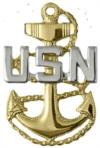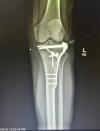
|
Hi Greg;
PADI used to claim absolute control over their dive tables and related material. I don’t know what their current position is on this.
I have sent querries to the various agencies to see if I can get definitive answers.
I will pass any info along as soon as I get it.
Ron sends
|
|

|
I just looked at mine and they say: "Distributed by PADI". There was no reference to rights being reserved.
I would suspect that PADI is licensed to distribute the tables through the organization that originally developed them.
|
|

|
PADI RDP (dive tables) are created by Diving Science and Technology (DSAT), who holds patents. But I’m not certain how restrictive they are...
|
|

|
For anything to be protected by copyright, it MUST have the copyright symbol and date of copyright. The dive tables are copyright protected by Diving Science & Technology Corp., so it would be illegal for you to 1) reproduce the tables for your own profit, or 2) to give to someone so they don’t have to buy their own. However, it would not be illegal for you to reproduce the dive tables you already own for your own personal use, e.g. so you could keep an original set at home and have a set to travel with, so that in case you lose your travel set, you still have the originals.
|
|

|
As I have said, I asked the various agencies what their take on the question is. So far NAUI has responded as follows:
"NAUI holds the copyrights to and controls the use of it’s dive tables."
Sincerely,
Randy
Randy Shaw
NAUI Training Manager
I’ll post any other responces as I get them..
Ron sends
|
|
|
|

|
Aren’t all the dive tables based on origional navy research anyway?
|
|

|
Greg - 12/11/2008 4:04 PM 
It’s hard to tell from a simple patent search on Google if the underlying data is protected. I’m sure the actual table design and product can’t be copied and re-sold under a different name. But I wonder if you can use the data from each different dive table to show online or to provide basic calculations.
|
|

|
Good question Greg...
That would be a matter of asking the agency, that holds the patent on the specific tables that you wish to use, for permission.
Knowing how "protective" some agencies are, I would suggest obtaining permission in writing. I have used patented & copyrighted materials in presentations before. Usually the holders will allow very specific use of the material. I have not encountered any who would grant "blanket" permission for unlimited use.
|
|

|
Hi Greg, I just happen to have my PADI dive tables sitting right next to me. I’ve got the recreational dive planners for air, EANx32, EANx36, and oxygen partial pressure. They’re all copyright protected by DSAT. The PADI logo is a registered mark and "Recreational Dive Planner" is trademarked by DST. Intellectual property (IP) law is pretty interesting. I have looked into it a little to research the idea of protecting some ideas I have and I’m also an avid photographer. All those things we see all the time and probably don’t think much about like trademark, copyright, patent, registered are all legal tools in the category of intellectual property.
Any original work that a person writes, draws, photographs, paints, etc. is protected by U.S. copyright (in the U.S.) law. Curiously enough, one does not have to inscribe anything like “copyright” or use the curious copyright symbol for it to be protected by US law. Neither does your work have to be registered with US Patent and Trademark Office to be protected. We use those marks and indications to inform others that we retain our copy rights and to help defend our works in “future” litigation. It might be hard to prove copy rights of an image or printed work, though, if you haven’t taken some steps ahead of time to identify the owner. IP laws and rights get more complicated when you leave the US and more difficult to enforce.
Pretty much any printed item, like a dive table or page in your dive text is protected by copyright. The copyright protects the form in which it is presented like a dive table or a photograph. Patents protect the idea. I didn’t see any patent information on my tables, and I suspect that dive tables we commonly use may have originally come from the US Navy, and may have not been patented because they are considered “public domain.” Photocopying that stuff and distributing it to another person actually violates the copyright held by the owner. Trade mark protects the mark (go figure) as an original and unique mark or symbol so that another person or company cannot use that mark to their benefit at the expense of the owner. We see trademark infringement all the time in countries outside the US when a foreign, local business “borrows” something like the world famous Mickey Mouse ear/head profile on their sign advertising their toy store or ice cream shop.
|
|

|
Long winded reply part deux:
I don’t see how IP law could prevent anyone from using a table. Our tables are a distillation of the formulas that produced the numbers we see printed. The formula or algorithim (or whatever it is) I believe could be patented, but I don’t think it is. Didn’t the US Navy pioneer the data and means to determine nitrogen saturation levels? Does that help? I think the answer you seekgrasshopper depends on exactly what you want to do with the table or formula. If you want to use a table to further your own venture you may need get some permission.
|
|

|
If the underlying data was developed by the Navy then you should be able to create your own dive tables, assuming you have the skills necessary. You probably cannot mimic anybody elses tables though.
I have only seen PADI’s tables but I would guess that if you compared the dive tables from all of the agencies you would find that they are not identical except for the data which should be public domain if the Navy developed them.
|
|

|
Navy and recreational dive tables differ. From what I understand recreational tables are copyrighted so you’d have to change them to print them wich opens huge liability issues however, if your thinking of putting your shop logo or some such info on the rdp. Ask your certifying agency about adding your logo to the ones you order. It might cost a little extra but hey, it’s advertising.
|
|

|
If you go back to your PADI Divemaster training you’ll find that a particular doctor was deeply involved in the research for the PADI RDP. DSAT is just a PADI company much like Mercury is a Ford company. SDI/TDI does not have their own dive table. They will sell you a copy of the Navy Dive Table but they strongly support (SDI Requires) the use of Dive Computers. IANTD has a slew of tables. IANTD paid for those tables to be cut specifically for them. Back before PADI started selling their own table and most Recreational Divers used Navy Tables you had to pay a research group to have your own tables cut. Essentially, each dive you made had a custom table if you called in to the research company to purchase it. Those tables were not to be resold. IANTD decided that they would purchase rights to a variety of tables (I believe they have 20 different tables in print at this moment in time for various mixes and deco models) and market them as soft tables. Their tables can be rolled up and are printed on a vinyl material. If you use the PADI Tables in any other class (I’m assuming this is the goal) then you are OK because so long as you pay the orginating agency for a table you may use it as you wish. Of course, you may not duplicate the table for distribution. To clarify, if you are a teaching an SDI Open Water course - where tables are not taught because you instead teach dive computers - you may add the PADI Dive Table to the curriculum and teach it to your students provided you sell them each a PADI Dive Table or you issue everyone an original PADI RDP for use during the class. Of course, if you teach them how to use a dive computer there is little need with your average Recreational Diver to teach them tables. Good dive computers have planning modes and work quite well for those Recreational needs.
Hope all is well and the holiday season is joyous - Greetings from Costa Rica,
Danny
|
|

|
Yet another answer concerning copyright:
"Hello, Ron,
Thanks very much for your message and for your patience while I did a
little research on this for you with my colleagues at DSAT, Diving
Science and Technology, which developed the RDP.
The answer is yes, the RDP and its model are both copyrighted and
patented. They cannot be used or copied without PADI’s express written
permission and are protected by copyright law.
However, the data related to the RDP’s testing has been published and by
definition cannot be copyrighted. Therefore, anyone is free to develop
their own model using the same data. In fact it’s my understanding this
is what Pelagic chose to do for the development of Oceanic computers.
I hope this fully answers your question Ron but just let us know if you
have others and we’ll try to help.
Best regards and good diving,
Mary Kaye
Mary Kaye Hester| Training Advisor, Training & Quality Management| PADI
Americas | 30151 Tomas Street | Rancho Santa Margarita, CA 92688-2125
Office: (949) 858-7234 X2388, (800) 729-7234 X2388 | Fax: (949) 267-1255
| mary.kaye.hester [ at ] padi.com | www.PADI.com"
|
|

|
So the tables thmselves are copyrighted but the information and data on them is not copy righted?
|
|

|
Greg - 12/24/2008 2:41 PM 
From BlueGil: Hey Greg here is another question about dive tables. I was tought that the original dive tables were developed by the US Navy, They are funded by US tax dollars so wouldn’t that mean that the US citizians have a right to the information in the dive tables?
I feel the same way you do, and so far, most seem to agree with that concept. The trouble comes when displaying the data. You can’t copy the same format that others have used in their dive planners. I imagine if you change the style, color or overall look and feel...you should be safe. But then again, you can get sued for anything now-a-days.
|
|